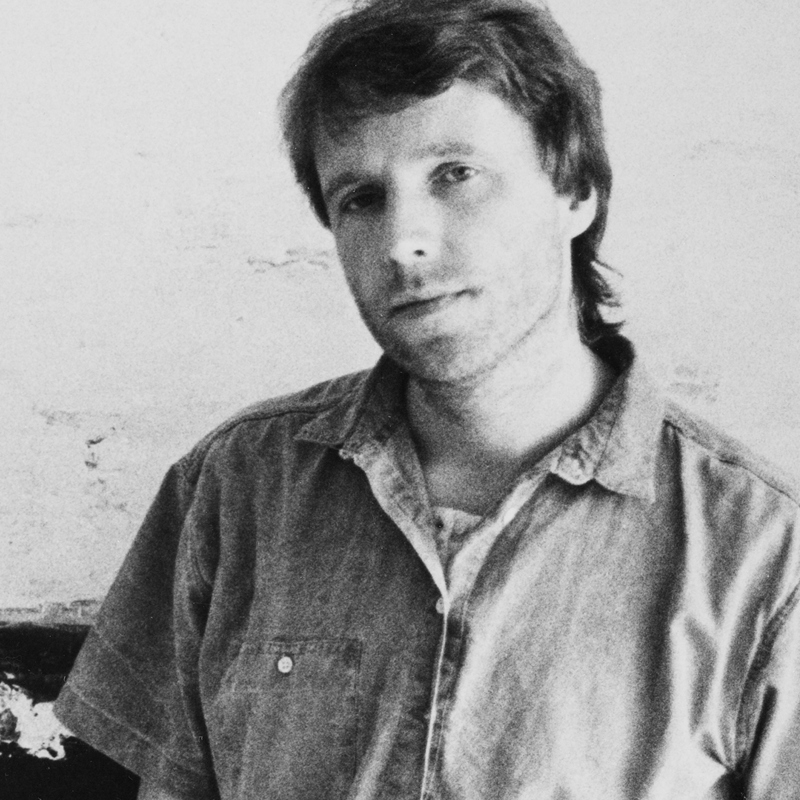
Hughie O’Donoghue (1984–5)
Hughie O’Donoghue (b.1953, Manchester, UK) was Artist-in-Residence between October 1984 and April 1985. O’Donoghue creates large-scale paintings that explore themes of collective memory, personal history, and myth. His works excavate the past, quarrying memory and experience. O’Donoghue’s paintings are built up slowly through many layers of oil paint, seeking to achieve in the artist’s words: 'an equivalent to truth'. O’Donoghue completed an MA at Goldsmiths in 1982. The following year he spent two months in residence at the Drax Power Station in Selby, Yorkshire as part of the ‘Artist in Industry’ scheme run by the Yorkshire Arts Association.
O’Donoghue said that being awarded the residency 'felt a bit like being signed for Manchester United' and represented a pivotal moment in his development as an artist. In a recent interview, O’Donoghue explained that the main decision he made during his residency 'was to reject the prevailing notion that all contemporary art and particularly painting, needed to predicate itself on the distancing notion of irony.'
He was particularly drawn to more obscure artists in the National Gallery’s collection like the Master of the Saint Bartholomew Altarpiece, a painter who was active in Cologne in the late 15th and early 16th centuries. O’Donoghue also said that he 'became quite obsessed with how good Titian was' and developed an unexpected interest in Poussin. He also made a large conte and charcoal drawing of El Greco’s 'View of Toledo' (about 1599–1600), which was on loan at the National Gallery from the Metropolitan Museum in New York.
During his residency, O’Donoghue created a new body of work that had the human figure at its core but was not part of the tradition of observing and working from the live model. The artist said that his goal was to use the figure in a way that it could be 'emblematic of cultural memory'. He created a series of paintings titled 'Sleepers', depicting the figure emerging from the landscape. These works were inspired by photographs of pre-historic bodies preserved in Danish peat bogs, which reminded O’Donoghue of stories about people living in peat bogs during the Irish famine of the early 19th century. The artist found the photographs that inspired these paintings extraordinarily beautiful, recalling for him 'the cycle of earth and awareness of mortality'. The 'Sleeper' paintings were 'worked like sculpture', the artist explained. 'At first you are just aware of the actual surface of the painting… then slowly the image is perceived.'
An exhibition of paintings and charcoal drawings that O’Donoghue produced during his residency was held in the Board Room of the National Gallery between 1 and 30 June 1985.
Following his residency at the National Gallery, O’Donoghue has held solo exhibitions at numerous public collections, including Haus der Kunst, Munich; Imperial War Museum, London; Fitzwilliam Museum, Cambridge; DOX Centre for Contemporary Art, Prague; The Gemeentemuseum, The Hague; Centre Culturel Irlandais, Paris; Leeds City Art Gallery; and The National Gallery of Ireland, Dublin. In 2013, he was commissioned to design stained glass windows for the Henry VII Lady Chapel at Westminster Abbey.
O’Donoghue was elected to the Royal Academy in 2009 and to Aosdána, the Irish artists’ association, in 2013. In 2005, he was awarded an honorary doctorate from University College Cork.
